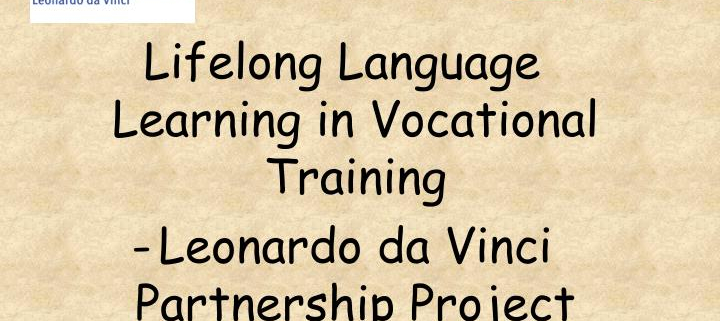Leonardo Partnership Program
Our Association has won the support of the Tempus Public Foundation for participation in the NETVET Project. The Project aims to form cooperation between institutions providing vocational training and civil organizations that unite such institutions. From the 26th to the 28th of May, 2009 the international group – Suomi, Italian, Spanish and Turkish experts – was our guest.
The following video record shows the pictures of this visit:
http://cecedisseminateeurope.blogspot.com/
NETVET 2008 – 2010
The Lifelong Learning Programme 2007-2013
As of 2007 the European Union’s education and training programme continues in a new integrated form under the name of Lifelong Learning Programme. LLP consists of four sectoral subprogrammes, each supporting different levels of education:
Comenius Provides support for schools across Europe wishing to carry out joint projects on language learning and other themes of mutual interest. Offers opportunities for professional development for those in teacher training, pre-school and school education.
Read more on the European Commission’s website
Erasmus addresses the teaching and learning needs of staff and students in Higher Education. Provides support for Higher Education Institutions across Europe to work on shared projects including curriculum development and other areas.
Read more on the European Commission’s website
Leonardo da Vinci enables people who are involved in vocational education and training to benefit from work experience placements and career development opportunities in another country.
Read more on the European Commission’s website
Grundtvig funds small-scale, community-based activities. It is designed to develop basic skills and to enable learners to play a more active role in their communities. The programme is open to people involved in adult education.
Read more on the European Commission’s website
The sectoral programmes are complemented by the Transversal Programme that supports policy cooperation, languages, information and communication technology (ICT) and dissemination and on publicizing the results from the programmes.
Read more on the European Commission’s website
Finally, the Jean Monnet programme focuses on enabling and encouraging European countries to work together more closely. It also offers support to key partners in the field.
Read more on the European Commission’s website
The Leonardo Partnership project – won by our Association – plans to initiate cooperation between four associations of vocational education and training (VET) institutions in four different countries. Three of them are national and one is a regional association. Two are associations of private, the other two of public schools and training centres. Among all this diversity, they share one common goal: the improvement of vocational education and training though networking and internationalization.
There are a number of challenges faced by vocational educational and training and highlighted in the Helsinki Communiqué where responses necessarily go through internationalization. This Partnership is based on the belief that associations/federations of VET providers can and should contribute to the mainstreaming of these challenges and to the search of responses.
The project aims cover two levels: management and pedagogical. On the management level, partners will work on: (1) creating a living network of VET providers out of this Partnership and preferably beyond it (2) administrating international activities in vocational schools (3) work on VET association management issues. On the pedagogical level, each of them contributes with at least one pedagogical best practice (foreseen best practices: ES – organising work based training, HU – professional improvement of teachers/trainers through coaching, FI – activating students to guide and help arriving foreign students during their on-the-job learning period.
The expected result is the creation of network out of the Partnership members, a better understanding of possible responses VET associations can give to new challenges in VET and the identification of fields of future cooperation.


